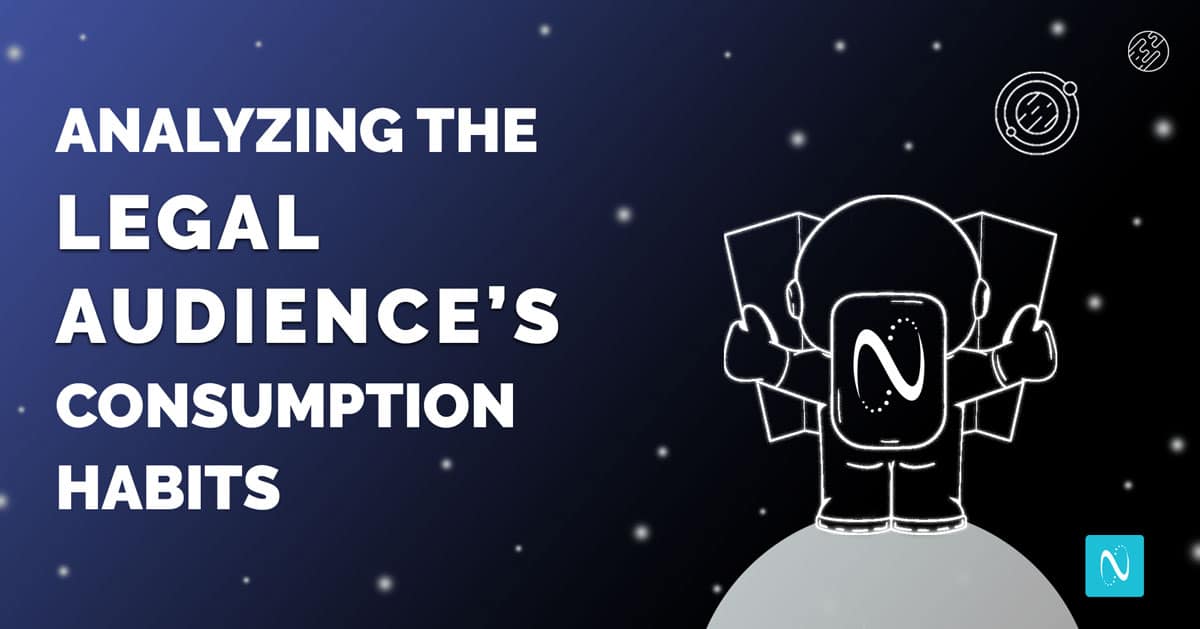
Analyzing the Legal Audience’s Content Consumption Habits
In our second blog in a series on the Impact of Coronavirus on B2B Content Consumption, we noticed an interesting trend. By the late Spring, the one professional audience that had the most voracious appetite for content related to the virus and working from home was the Legal field. This month, we’re profiling the Legal audience to see where the interests and needs of these professionals lie.
Considering that most of the content consumption occurring on our platform is being initiated by a balanced mix Financial, IT, HR, Sales and Marketing professionals, seeing the sudden flurry of Legal activity reminded us of two things:
- COVID-19 was changing everything
- The audience is forever evolving
All of this made me curious. Outside of these two topics, what else is the Legal audience consuming?
Fortunately, Audience Explorer offers marketers the chance to uncover tangible insights into specific audience segments like the Legal field, based on the content users register for and consume on the NetLine platform.
Quick Takeaways:
- Corporate acquisitions is the most talked-about topic in the Legal space.
- Legal content is most consumed within the industry itself.
- White papers are the most popular form of content consumed by the Legal audience.
The Court is Now in Session: Exploring the Nuance of the Legal Audience
First things first, we’ll first choose “Legal” from the buyer selection dropdown menu and choose “United States” from the Region filter. By selecting the U.S. as our Region, this brings our total number of content recommendations from 397,469 to 372,981 over the last 180 days.
Let’s begin to build the case from this report.
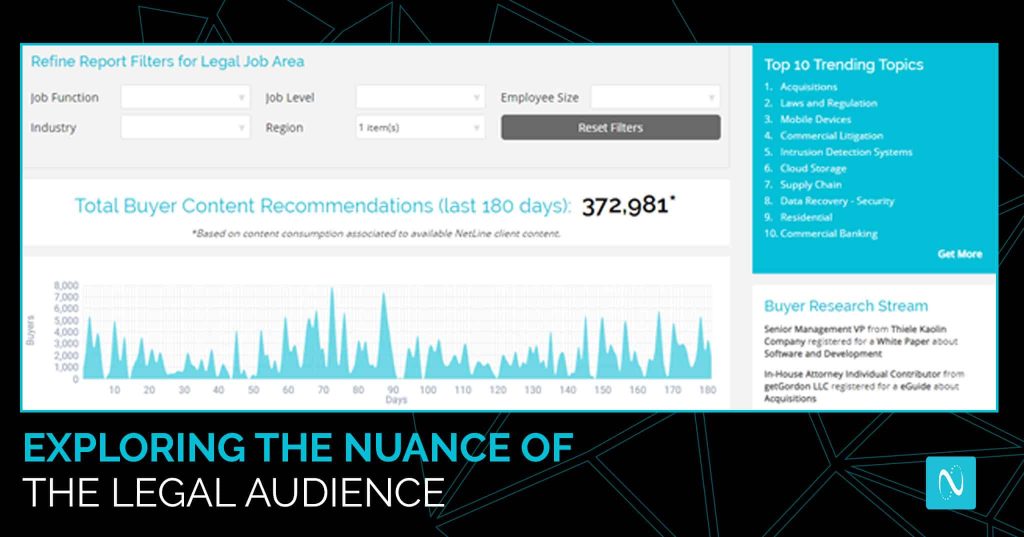
What can we decipher from the top trending topics?
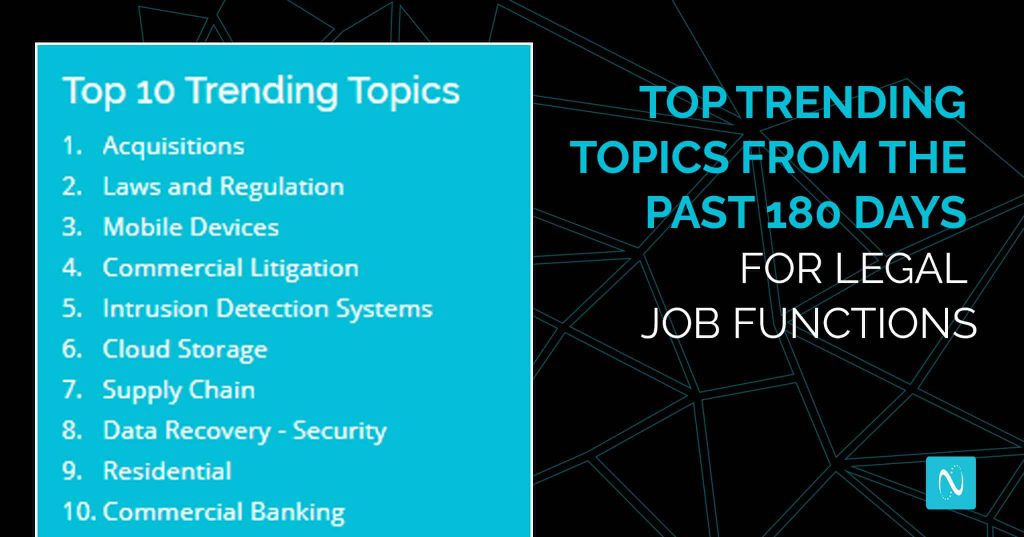
As a marketer, the first thing that jumps out to me is that 7 of the 10 Trending Topics are subject matters that exist outside of the legal realm. But I’m most curious about the things that are directly related to the world of law.
To get a better idea around the three legal topics (Acquisitions, Laws and Regulation, and Commercial Litigation), we asked lawyer-marketer extraordinaire Kerry O’Shea Gorgone of MarketingProfs to provide some context for why these topics are in such demand in today’s environment – specifically, why Acquisitions lead the pack?
“I’m not all that surprised to see acquisitions at the top of this list,” O’Shea Gorgone said. “To put it bluntly, there are deals to be had. Companies with deep pockets can acquire some really valuable start-ups for relatively short money.
As someone who has never attempted to pass the Bar Exam, the first thing that jumps out to me is that 7 of the 10 Trending Topics are subject matters that exist outside of the legal realm. Let’s start with the most obvious one, given where we are in our lives: mobile devices.
With the amount of remote work that’s happened since March, it’s quite possible that employees are using multiple devices to get their work done, including their own, personal devices. While employees have been using their own devices for work for much of the past decade, extended use away from the safety of an office’s protections presents a laundry list of challenges.
Naturally, O’Shea Gorgone approached the appearance of Mobile Devices on this list from a different angle. “[Seeing] Mobile Devices brings to mind the way that some agencies are using cell phone data to track movement by the population,” O’Shea Gorgone said. “If people are going “too far” from their homes, local government officials might conclude that they’re violating “safer at home” orders and roll back some of the reopening efforts.”
The challenges posed by Mobile Devices provide a natural connection to other topics, O’Shea Gorgone continued. “Intrusion detection, cloud storage, and supply chain all speak to businesses navigating a new way of operating. They’ve sent their workforces home (as they should), and now they need to make sure that they’re acting responsibly with regard to data collection. They also need to make sure those empty offices remain secure (hence intrusion detection).”
What the Buyer Stream Tells Us
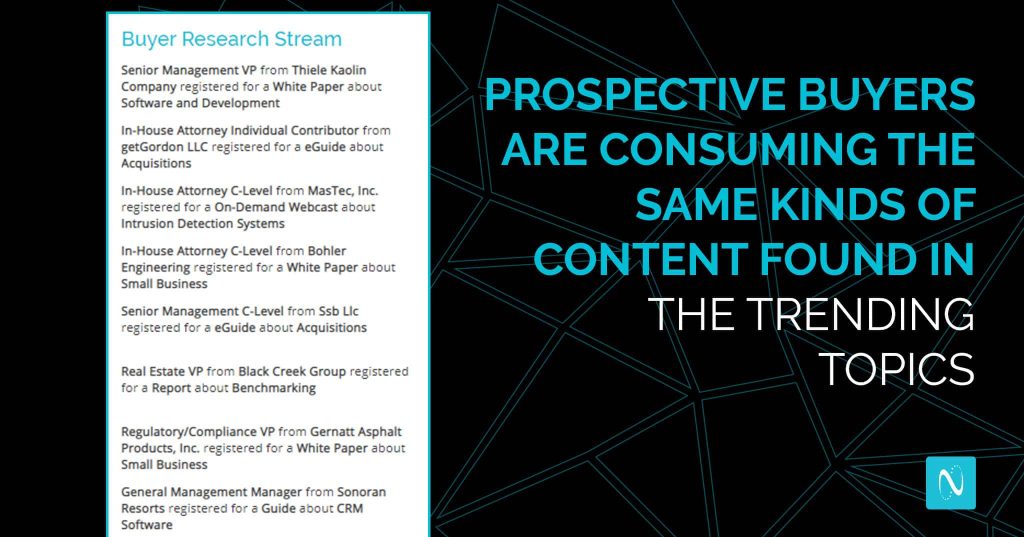
Compared to the Software Developer audience we profiled last month, the Legal audience’s demand is about ⅔ its size. What’s cool to see here, which doesn’t always happen depending on when you take your audience snapshot, is that Prospective Buyers are actively consuming the same kinds of content found in the Trending Topics.
We can see that Acquisitions and Intrusion Detection Systems were two of the most popular topics consumed along with Small Business. Considering the amount of IT content that is requested across the web, we’re not surprised to see Legal employees consuming information about Software and Development or CRM Software, especially when these employees according to the Buyer Research Stream are not in what we’ll call “attorney-specific” roles.
Slicing Up the Pie Charts
The most visual, and interactive, portion of Audience Explorer is the pie chart section. Here, content consumption data is broken down into 4 specific categories: Job Function, Job Level, Company Employee Size, and Company Industry.
Job Function
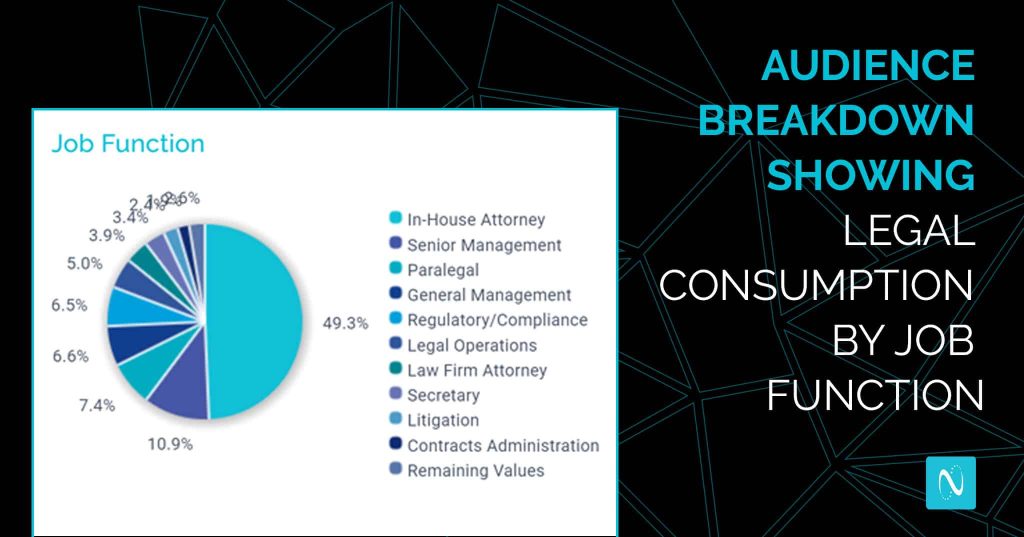
Nearly half of all content requests have come from In-House Attorneys over the last six months. Senior Management claimed the second largest chunk, just shy of 11%, with Paralegals and General Management employees nearly neck and neck for 3rd and 4th, respectively.
Recognizing the margin by which In-House Attorneys lead this audience, we took a closer look at their consumption habits. Given the size of the influence, the Trending Topics list remained almost identical, with only a few changes to sequence and Engineering replacing Supply Chain.
Within the Buyer Research Stream, interest in Intrusion Detection Systems content increased, as did information about Payables and Receivables and Integration. All in all, it’s quite clear: this Job Function is the primary consumer of content within the Legal space — a very important insight for businesses associated within this space. Marketers should take this insight into consideration as they create content for these audiences.
Job Level
The Job Level filter allows you to review which job titles/levels of seniority are interacting with content. In the Legal industry, Individual Contributors (29.9%) make up the majority of active consumers, followed by the C-Level (15%) & Director (11%) levels. By filtering these Job Levels, further we find that 57.5% of all Individual Contributors are their company’s In-House Attorney while 36.1% of those at the C-Level also identified themselves as an attorney, meaning that at least ⅓ of executives within the Legal audience are also lawyers.
Staying with C-Level employees, let’s analyze the Buyer Activity Graph. Below is the Activity graph with the Region selected as the only filter.
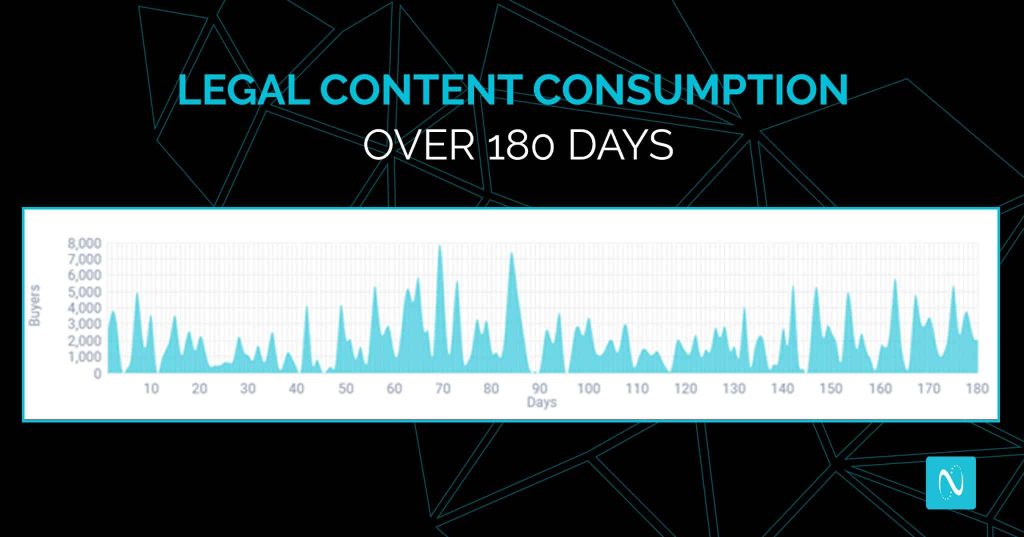
Within the group at large, the largest — and most sustained — period of activity came nearly 100 days ago, which at the time of this writing is roughly May 20, 2020. COVID-19 was still the major focus of all news coverage, making it difficult to get a sense of what, if anything, beyond the virus drove demand.
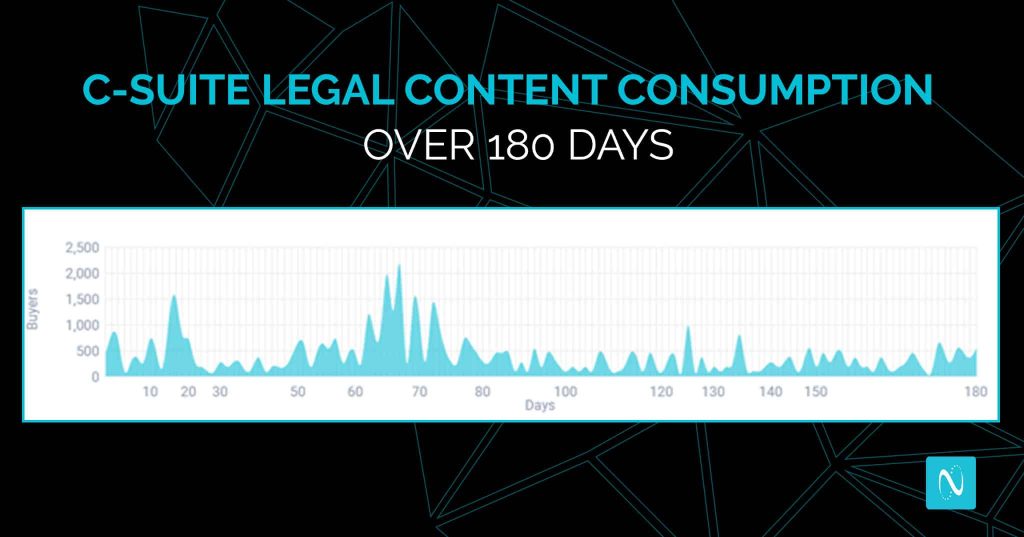
In examining the C-Level Activity’s demand, we see that the majority of the activity came between 65-75 days ago, which would be April 27, 2020. Coronavirus was an even more ubiquitous story during April, making it easier to make the assumption that interest in topics like Laws and Regulation, Mobile Devices, and Cloud Storage were off-shoots of COVID-induced consumption.
Company Employee Size
Think back to every law commercial you’ve ever heard or seen; it’s likely that you can recall at least one of them immediately (i.e. Sheridan, Dunleavy, and Bowles — a completely made up law firm that sounds like a great name for a company).
People often think that law firms are big companies with dozens of employees. That certainly is true in some cases, but I share this with you most are smaller than people expect them to be. Considering that 28.1% of consumption came from companies of between 10-24 employees, it’s much more likely that smaller law firms are the norm. Then again, the second most active consumer group happens to be from companies with 50,000+ employees, so take that insight with a grain of salt.
Of course, it’s crucial to remember that this audience does not comprise of lawyers, exclusively, a fact we’re reminded of by taking a gander at the Most Active In-Market Companies. While powerhouse firms like Greenberg Traurig, LLP (3), Cozen O’Connor P.C. (5), & Jones Day (6) are featured on this list, The Department of Justice is the most active consumer of content. Joining the DOJ are different State departments from California, New York, and Maryland, along with private sector giants Baker Hughes, Inc., Wells Fargo, and Fiserv, Inc.
Company Industry
Sticking with the ongoing theme of every chart being nearly 50%, the Legal industry is the most prominent field in this category. The Service Industry, which represents those with trades in the mechanical, plumbing, and electrical fields, was the second closest at 9.2%.
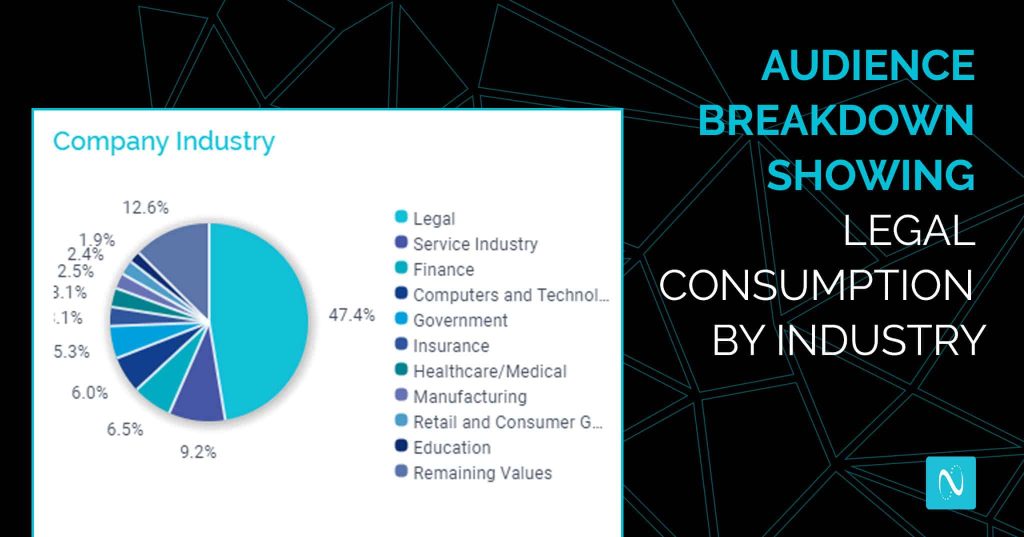
Which Type of Content is Requested Most?
In our 2020 State of B2B Content Consumption and Demand Report for Marketers, we shared that eBooks were the most consumed content type of 2019. For the Legal audience, however, White Papers were the most consumed content type, with eBooks not even making the list.
While the terms eBook, White Paper, and Guide are often used interchangeably, each has a distinct meaning. Take a look at what we included in our 2020 Report and you’ll understand why White Papers are the heavy favorite in the Legal world.
eBooks are the ultimate utility in content marketing, eBooks have a wide range of uses. From case studies to thought leadership, they can be used to present anything a business wants to feature.
White Papers are the closest things content publishers have to scientific studies. Where eBooks have room to be casual, White Papers are designed to present data and other vital information as directly as possible.
Guides while the term is used loosely, are primarily positioned to imply or even establish authority. This format is designed to walk a reader through a topic or procedure step by step from start to finish.
Given the straightforward nature of everything in the world of law, the popularity of White Papers makes complete sense. The professionals in this audience need access to information that is nearly clinical and unbiased. White Papers offer that in spades.
Closing Statements
The Legal audience is one with a tremendous amount on their plate with perhaps the lowest-threshold for frills or fluff. They’re asked to weigh in on a variety of topics and have salient opinions on them quickly in order to support their clients and employer. As O’Shea Gorgone shared, all of these parties will need legal assistance to navigate a complicated legal landscape. “It’s complicated to begin with,” she says, “and layering on the patchwork of executive orders and mandates relating to the pandemic only adds to the confusion.”
Hopefully this analysis gives you a greater appreciation for everything on their radar and the mountains of content they’re sifting through to find the answers you and your companies need.
We’ll be back next month with another Audience Explorer breakdown of a brand new audience. Let us know if there’s one you’d like to know more about!
Special thanks to Kerry O’Shea Gorgone for providing her expertise and insight to this article. Beyond developing premier marketing training content for MarketingProfs, she co-hosts The Backpack Show with Chris Brogan,






